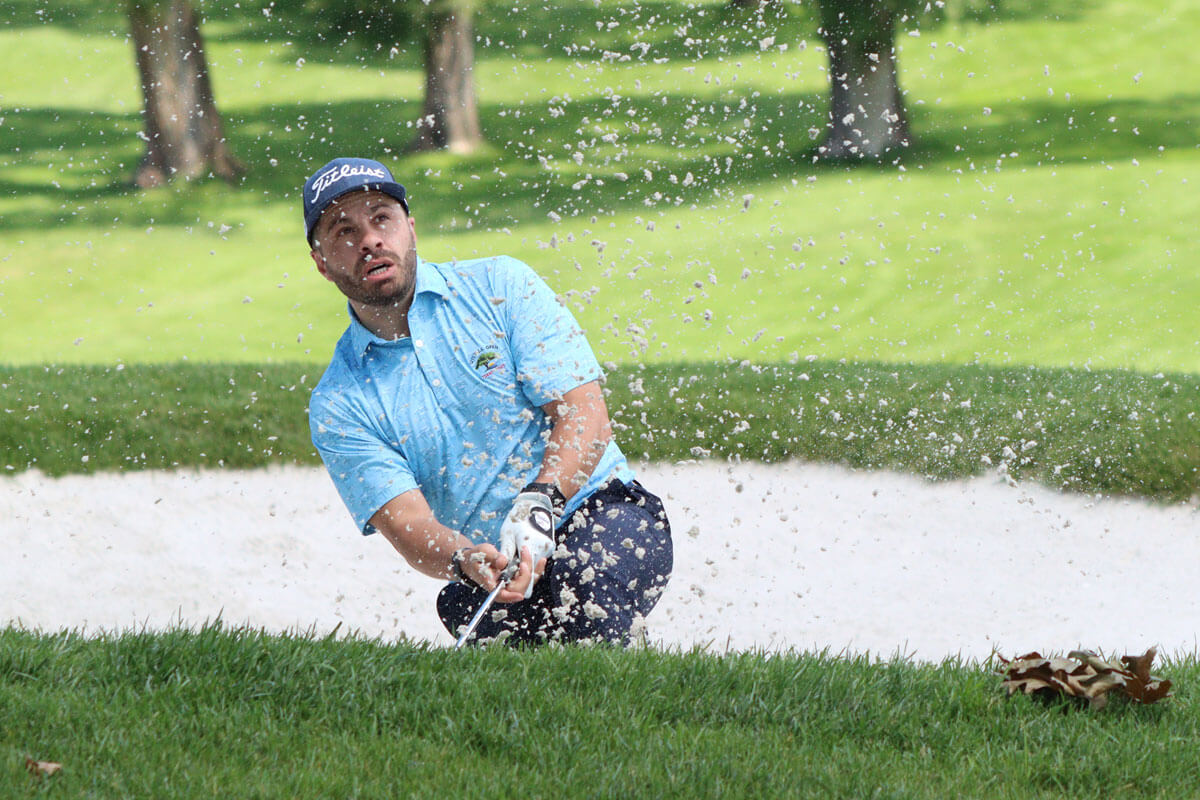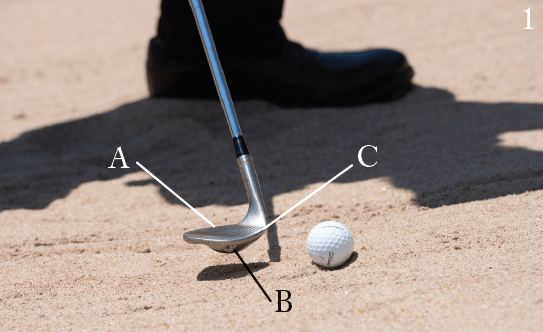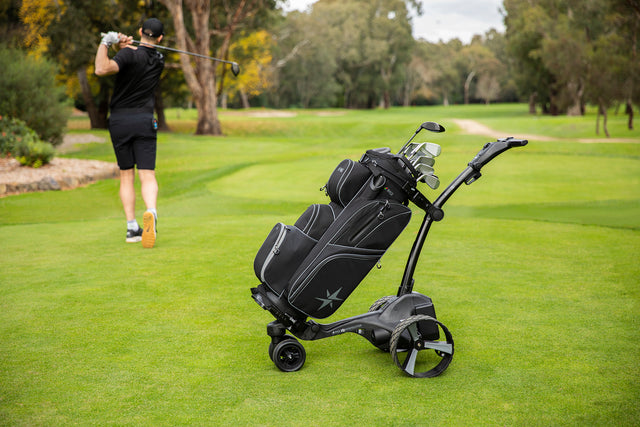Golf Instruction
Bunker Shot Basics: Adjusting Your Technique for Hard vs. Soft Sand

One of the inherent challenges with bunker shots is that you never quite know what sand conditions you will face when stepping down into a trap.
Is the sand going to be packed firm with the ball sitting up on top? Or is the ball nestled down in soft sand?
This might seem like a subtle difference, but it actually has a massive impact on how you should play the shot.
Let’s take a look in the article below at how you should adjust your technique to get good results in either situation.
Why Does Sand Type Matter?
First, let’s talk about why you should care about the firmness of the sand.
If the sand is soft, your club is almost certainly going to sink down into that sand as you swing through the ball. On the other hand, hard sand will cause your club to bounce off the top – you probably won’t be able to get down deep into the bunker with your swing.
It’s possible to hit good shots in both situations, but you’ll need to use the right method to make that happen.
There are a few factors that impact sand conditions on a golf course:
1. Course Characteristics
Some courses fill their bunkers with soft, fluffy sand, and they refresh that sand regularly. On other courses – often municipal courses or other facilities with modest budgets – there may be very little sand, and the bottom of the trap may look like little more than dirt.
As you play a course a few times, you’ll get familiar with the sand conditions, and you can alter your technique accordingly.
2. Weather Conditions
The sand you find in bunkers is more likely to be hard when it is wet. After a heavy rain, bunkers will often be packed down and you’ll struggle to play a traditional explosion shot.
As those bunkers dry out, the conditions will gradually soften.
3. Maintenance
Again, this is a point that has more to do with budgets than anything else. If a course has the staff and equipment needed to regularly care for the bunkers, the sand will usually be soft. In the absence of that maintenance, however, the bunkers will get hard and playing shots will get tricky.
It’s a good idea to pay attention to the normal sand conditions on your home course. Also, when you head to a new course for a round, spend some time before the round visiting the practice bunker (if they have one available). Even hitting just a few shots from the practice bunker will help you understand what to expect if you find a trap on the course.
A Basic Technique for Soft Sand
Let’s start by talking about how you should approach a standard bunker shot in soft sand. Greenside bunker shots often intimidate the average golfer, but they are actually pretty simple.
For a typical “explosion” shot, try to hit on the three points listed below:
- Play from an open, wide stance. You’ll want to position your feet relatively far apart, so you have a solid base on which to swing. And you should be standing open to the target, so you can easily swing across the ball from outside to in.
- Open the club face. In addition to an open stance, you also want to feature an open club face when playing a greenside bunker shot from soft sand. Opening the club face is going to give you the loft you need to get the ball up out of the bunker quickly.
- Swing under the ball. This is the key to the whole thing – you need to swing under the ball and down deep into the sand. This is the opposite of what you are trying to do when hitting shots off the grass, where you need to strike the ball first. In the bunker, try to hit the sand first and slide your club under the ball completely. The sand itself will lift the ball up out of the bunker, and hopefully onto the green.

Photo via coloradoavidgolfer.com
You don’t need to make things any more complicated than that. With an open stance, and an open club face, and a swing that goes under the ball, you’ll be ready to hit some excellent greenside bunker shots.
Adjusting for Hard Sand Conditions
At this point, you should have a clear picture of how you’ll want to approach greenside bunker shots when the sand is soft. Now, let’s talk about how you can alter that technique to find success in hard bunkers.
Most golfers would agree that hard bunkers make for more difficult shots, but they aren’t impossible. Try these adjustments the next time you encounter firm sand:
- Square up your stance. You don’t want to swing as aggressively from outside to in when the sand is hard, so your stance should be closer to square than it was previously. You may still want to have it a bit open – this is a matter of personal preference – but be sure to bring it at least closer to a square position.
- Don’t open the face. When you dramatically open the face of a sand wedge, you expose more of the “bounce” on the sole of the club to the ground. That’s a good thing when the sand is soft, but it’s a problem in hard bunkers. In this case, the club may skip off the sand and you’ll wind up hitting the shot thin. For these shots, keep the face in a similar position to what it would be for chipping.
- Pick it. Again, you are doing the opposite here as in the section on soft sand. With the conditions too hard to get under the ball, your goal is to pick it clean. Remember, the ball is going to come out quicker when you pick it instead of blasting it, so a smaller swing is required.
It’s important to understand the right techniques for hard and soft sand, but only one thing is really going to elevate your game in this area – practice. You simply must work on these shots for yourself to get a feel for how they are played.
Make bunker practice a regular part of your routine and you should gradually gain confidence and see improved results.
-

 LIV Golf Tour5 days ago
LIV Golf Tour5 days agoWATCH: Kevin Na Throws a Temper Tantrum at LIV Golf Adelaide
-

 LIV Golf Tour5 days ago
LIV Golf Tour5 days agoLIV Golf Sets New Record With Adelaide Event
-

 LIV Golf Tour2 days ago
LIV Golf Tour2 days agoViktor Hovland Makes His Decision on PGA TOUR Future
-

 Fantasy Golf Predictions5 days ago
Fantasy Golf Predictions5 days agoFantasy Golf Picks, Odds, and Predictions – THE CJ CUP Byron Nelson
-

 News1 week ago
News1 week agoDouble Trouble: We May See Two Woods at 124th U.S. Open
-

 Courses1 week ago
Courses1 week agoThe Byron Nelson Has a New Sponsor and New Experiences — But It’s The Same Legendary Tournament
-

 News1 week ago
News1 week agoTony Romo Weighs in on Scottie Scheffler: ‘He’s Never Failed to Break 70 in 500 Rounds’
-

 LIV Golf Tour4 days ago
LIV Golf Tour4 days agoR&A Exec Sends STERN Message to Greg Norman Regarding Open Championship Attendance








